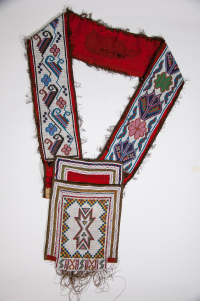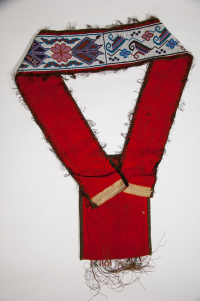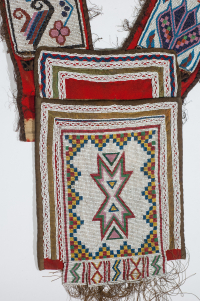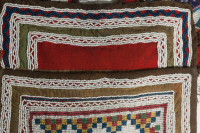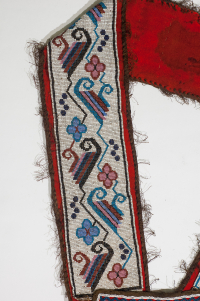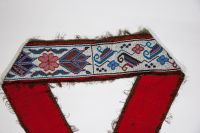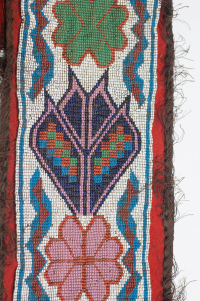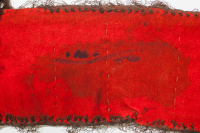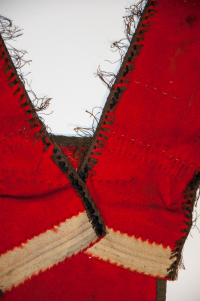Bandolier Bag
Bandolier Bag
Bandolier Bag
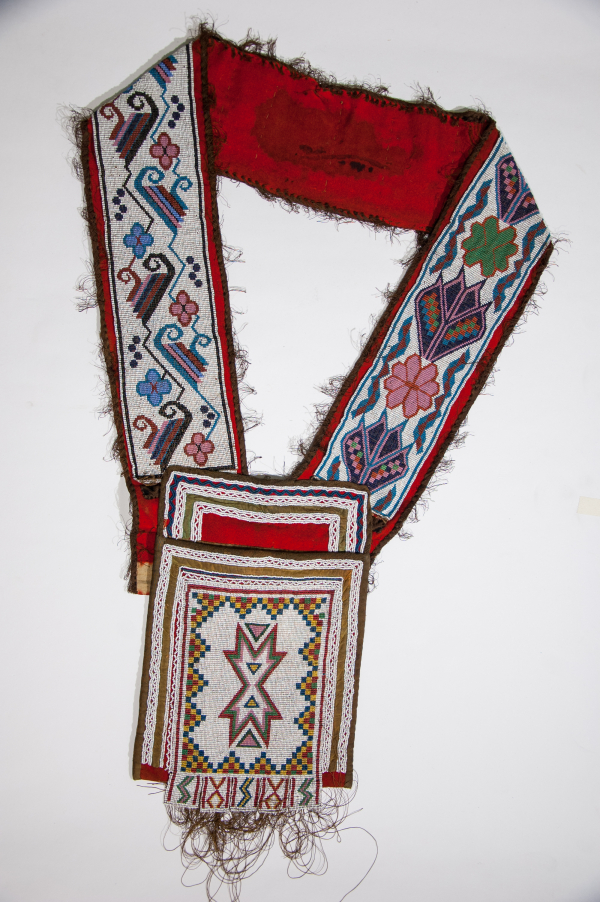
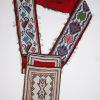

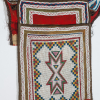
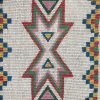
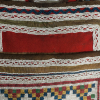

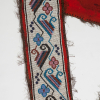

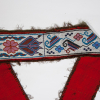
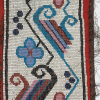
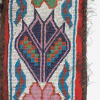
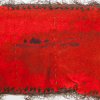
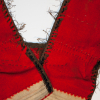
Loom-woven & overlaid spot-stitched beadwork, geometric & floral designs in beadwork, functional pocket, cotton lined, 5 loom-woven beadwork tabs
Also attributed to the Saulteaux type.
Summary of original information
Read More About This Relative
Fabric, cotton, blue, red & white plaid; Fabric, stroud-like, red; Ribbon?, cotton, brown; Binding tape, cotton, brown; Ribbon, silk, green; Seed beads, glass, opaque white, opaque black, red (opaque mahogany, two shades of dusty rose, opaque dark pink), opaque lemon yellow, green (opaque pistachio, transparent dark green), blue (opaque light periwinkle, opaque azure, transparent azure, opaque navy).
Hand sewn, Loom-woven beadwork, Overlaid spot stitched applique beadwork, Made of red stroud with seed bead decoration, Pouch and panel edged with two types brown bias tape, Five loom-woven beadwork tabs at bottom.
Straight and zigzag lines, Triangle, square, geometric, Floral four-petalled flower, eight-petalled flower, Dot, Swirl, Tab design - geometric - colours and pattern repeated from centre out, Strap – loom woven band in white field, asymmetrical decorative motifs, conventionalized unit design (Lyford): rose, four dot, berry, tulip, and pot hook?.
Bandolier bags most likely originated in the Upper Great Lakes region during the 1840s and 1850s. Fashioned exclusively from European materials and adorned with thousands of beads, bandolier bags were primarily for show, as a symbol of identity, wealth and status. Although initially functional, by the late 19th and early 20th centuries many of the bags had false pockets or none at all. Sometimes called "friendship bags", they were often created as gifts to strengthen relationships within communities or between nations. By the 1870s they had become an important element of formal dress worn mainly at ceremonies and celebrations by men, and occasionally by women. They wore them - singly or several at a time - crossed over the torso or draped around the neck. “The wearing of more than one bag was generally the prerogative of a leader or a person of high honour." (McCord, 2013) “Bandoliers were adopted by Ojibwa in 19th century after seeing bullet pouches used by British soldiers. Bullet pouches were plain and decorated with crest or coat of arms. When idea adopted by Ojibwa, they were greatly prized and highly decorated ceremonial accessories. They became so highly prized by Ojibwa and other tribes (especially Sioux), that one bandolier could be traded for one pony. They became a status symbol of highest ranking Midewiwin priests.(Flanders, 1977)
Provenance
McCord Museum, Wearing Our Identity. Montreal: The McCord Museum, 2013; and “Beads: Their Use By Upper Great Lakes Indians” by Richard Flanders, 1977
McCord Museum. Wearing Our Identity. Montreal: The McCord Museum, 2013. Print.
About This GRASAC Record
Manitoba Museum
Content from the Manitoba Museum's catalog records. Uploaded by Orvis Starkweather as part of their summer internship.













Attributed to Northeast Great Lakes-Riverine ? Geo-cultural area.
 Knowledge Sharing Platform
Knowledge Sharing Platform

